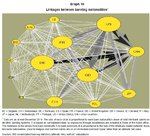Does there exist anywhere online a schematic map showing net public debt exposure between major economies? Here's information about who owns US debt http://www.treasury.gov/resource-center/data-chart-center/tic/Documents/mfh.txt but that doesn't give the net figures and a map with arrows could display this very well. It would be a very helpful overview to have but I haven't been able to find one. Or am I being simplistic?

